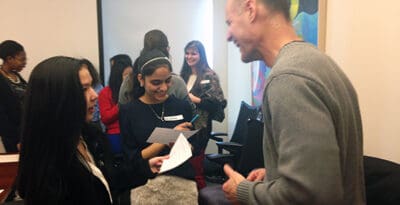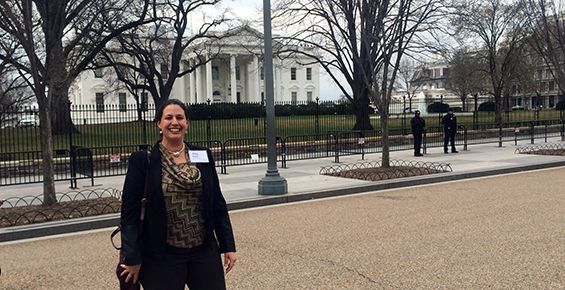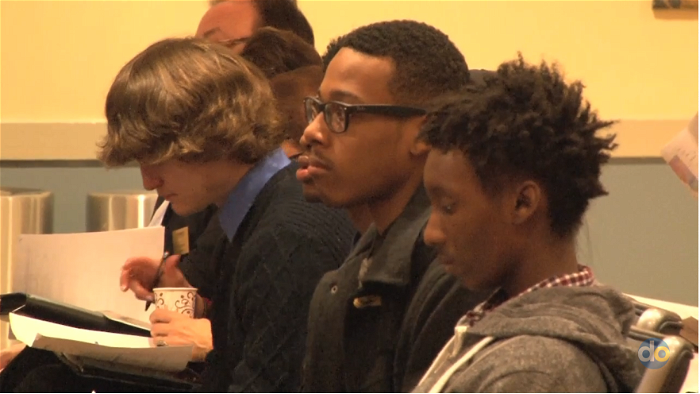
C-Town Pathways
What do you get when you cross a global software giant with a Boston high school? The next generation of STEM professionals, innovators, and entrepreneurs ready to change the world. Today’s high school students need…

August 17, 2020
“Helping the World Run Better” is no small feat, but that is what the largest worldwide independent software manufacturer, SAP, endeavors to do with its products and services.
“Helping the World Run Better” is no small feat, but that is what the largest worldwide independent software manufacturer, SAP, endeavors to do with its products and services. SAP’s 280,000 customer organizations produce 78% of the world’s food and 82% of its medical devices, and over the last several years, SAP has extended its reach further to high school education. SAP is currently partnering with secondary and postsecondary education institutions in Vancouver, Canada, and Brooklyn, New York, to implement specialized career pathways focused on information technology. In these programs, students participate in a rigorous high school experience that integrates intensive career exploration and preparation with college-level coursework. The most recent SAP education initiative, called C-Town Tech is now in the works at Charlestown High School, a public high school of roughly 1,000 students located in greater Boston, Massachusetts. In addition to SAP and Boston Public Schools, the C-Town Tech partnership includes the Boston Mayor’s Office, Bunker Hill Community College, the Boston Private Industry Council, and Jobs for the Future.
While the inaugural cohort of C-Town Tech ninth-graders will not enroll until fall 2015, many of the school’s current students are getting a taste of what this partnership will look like. In February, the Boston Private Industry Council (PIC) hosted its annual Job Shadow Day where students across Boston Public high schools spend the day learning about different careers and connecting with local employers about potential summer employment opportunities that the PIC coordinates. Roughly 14 students from Charlestown High School spent their Job Shadow Day at the SAP offices located in Cambridge. Not quite knowing what to expect, the students, chaperones, and I filed into a beautiful boardroom overlooking the Charles River where one of the company’s engineers, Ruchi Aswal, greeted us. Having volunteered previously for some of SAP’s other education and outreach activities in Boston, Ruchi was well prepared with an agenda that began with introductions and an overview of SAP. She also asked each student to share with the group what they hoped to learn from their visit. The students’ responses ranged from wanting to learn more about engineering, to graphic design, to what it was like to work for SAP. Ruchi recruited five of her colleagues whose different roles and responsibilities at the company could speak to the range of students’ interests. For instance, along with software engineers, a developer, a graphic designer, a technical writer, and a client manager were all present and eager to share with students what their day-to-day tasks and projects entail. I think we were all a little surprised to learn that such a diverse collection of occupations, all requiring different types of education and training, had a valuable place within an IT company.
Next, students participated in an activity called, “networking bingo” which went surprisingly well (I thought the students would be shy, but they dived right in!). Students went up to each of the volunteers to ask them questions about their professional background and what they currently do at SAP. This gave students a better sense of how employees got to be where they are today, as well as why a company like SAP needs employees with a range of different skills and expertise. Ruchi then showed students videos about SAP’s products and services, which had a lot of recognizable brand names. After the videos, the SAP volunteers discussed what it means when a company like Skullcandy, which manufactures headphones, or Nestlé, is a client of SAP. To help provide students this real-world understanding, Ruchi showed another example of how SAP’s technology can be adapted to client needs through a video about how SAP developed a scouting app for the San Francisco 49ers that helps scouts organize and streamline data about potential recruits when they are out in the field. It certainly hit home when Ruchi showed us another video demonstrating how SAP software helped the City of Boston this winter to track the number of snowplows on the road and identify neighborhoods and streets throughout the city in need of maintenance.
Students were then paired with an employee “mentor” for two-on-one informational interviews. This activity also gave SAP volunteers an opportunity to provide feedback on the resumes students brought with them. I spoke with one student who was paired with the technical writer, and she said that she would definitely be interested in taking a technical writing course if Charlestown High School offered it. Later, when we reconvened as a group to reflect on the visit, one student who had a keen sense for the business and operations side of IT asked a lot of insightful questions about how SAP develops and markets its products, and how patents and licensing agreements work. My favorite question of his was, “So, do you have philosophers here whose job it is to just think up this stuff?” This comment, in addition to the range of occupations at SAP, to me drives home the fact that there are numerous pathways that students can take within a company like SAP, which has so many moving parts, but few opportunities for students to learn about these different roles and a company’s entire ecosystem, regardless of the industry. And while SAP does not have resident philosophers on staff, students certainly got a glimpse into a work culture that SAP employees all agreed is built upon collaboration, teamwork, and the cross-fertilization of ideas and expertise.
This partnership with SAP is just one example of the many ways that JFF works with employers to build strong connections with schools. In addition to working one-on-one with employers like SAP around targeted career pathway initiatives, we also work with multiple employers across regions to build systems of grade 9-14 career pathways in a number of high-wage, high-demand sectors that align with local postsecondary programs of study and workforce needs.
For more information about C-Town Tech, visit the school’s website.
Photograph SAP Job Shadow day.

What do you get when you cross a global software giant with a Boston high school? The next generation of STEM professionals, innovators, and entrepreneurs ready to change the world. Today’s high school students need…


Last week, I represented Jobs for the Future at a White House discussion focused on STEM high schools and business and industry’s role in supporting young people in their STEM and career-focused learning. Convened by…

Our national movement transforms how U.S. education and workforce systems prepare young people for meaningful careers. With over a decade of leadership in the pathways movement, we bring incomparable expertise, collaboration, and a relentless curiosity…

A History of Building Workforce Partnerships Yolonda Morrison knew nothing about forging metal or operating massive mobile machinery when she first donned a hard hat at a high-tech titanium manufacturer. The 43-year-old single mother had…
